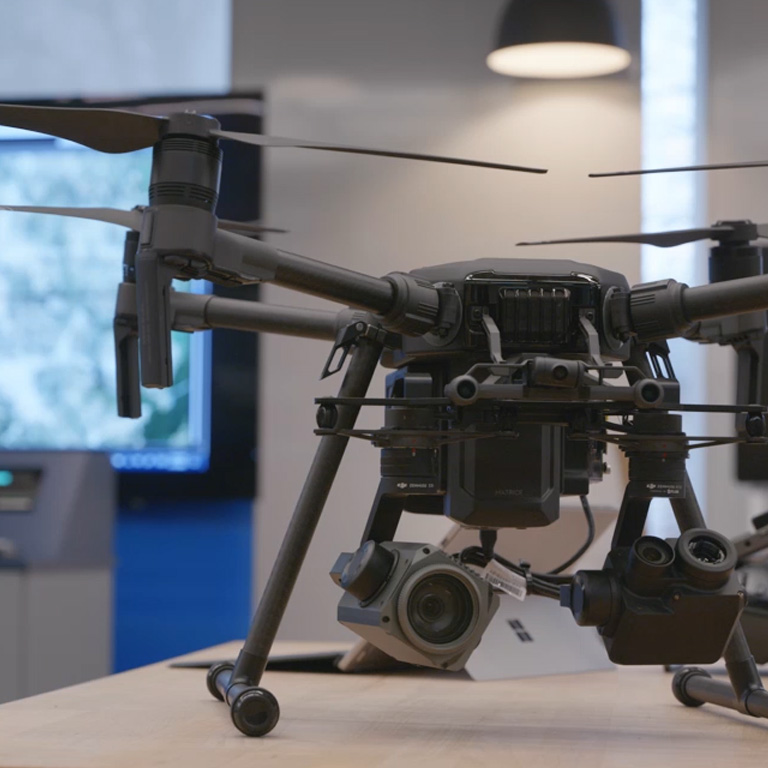The 5G Innovation studio brings together the power of AT&T’s business, consumer and network organizations to accelerate the path to market for new 5G-centric product offerings and key initiatives.
About
the studio
AT&T Labs | AT&T: 2:32
At our new AT&T 5G Innovation Studio in Plano, TX, we’re collaborating with customers and industry partners to bring 5G to life in new ways. Watch how our teams are exploring use of drones and modernizing sports entertainment – with holograms
Much like 4G introduced the world to the gig economy, mobile 5G will jumpstart the next wave of unforeseen innovation. We’re cultivating the ecosystem today as we move to a 5G world at scale.
The AT&T 5G Innovation Studio, which officially opened its doors in April 2021, brings together organizations across AT&T explores many new enterprise and consumer use cases and accelerates the path to market of new product offerings and key strategic initiatives. The space is equipped with the latest wireless and wireline technologies including mmWave and sub-6 5G radios, multiaccess edge computing, a private standalone 5G network, multigig fiber broadband, and more. With customers and industry collaborators, our scientists and engineers ideate, test and validate new 5G-centric applications across a variety of industries.
Use
cases

Autonomous drone control: We’re working with Microsoft Azure and the drone company, EVA, to evaluate how our 5G network and edge computing can be used for near real-time drone control while building the playbook needed to drive the adoption of drone traffic on our network. Our teams can control a drone over the network using the AT&T Network Edge prototype environment to maintain low latency connectivity between the drone and the control software. The low latency of 5G combined with EVA’s app deployed at the network edge on Azure enabled autonomous drone control beyond visual line of sight.

Network slicing applications: Network Slicing is a new capability being implemented in 5G Standalone networks that allows traffic from a cellular device to be partitioned down to the application level and treated differently based on application need. We are looking at the technical feasibility of use cases including allowing safety critical applications priority access; emphasizing latency over bandwidth for interactive gaming; minimizing jitter and steady bandwidth for live video streaming, and more.

Network telemetry APIs: Current applications built for LTE generally treat the network as an adversarial black box and attempt to engineer around the worst-case scenario. With the advent of 5G, one of the major goals is to enable applications to treat the network as a partner, not only prescribing what they need with technologies like Network Slicing, but also in getting information about current and near-future network conditions to optimize things like workload placement or video codec selection and tuning.

